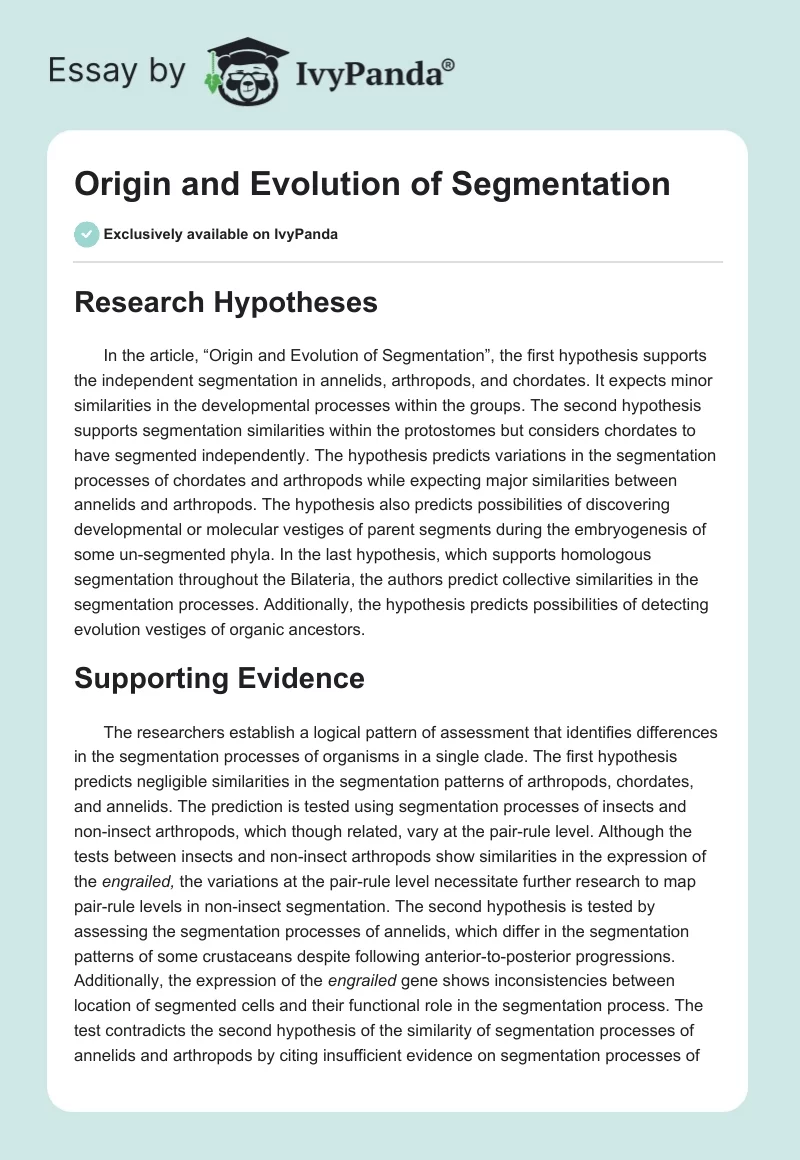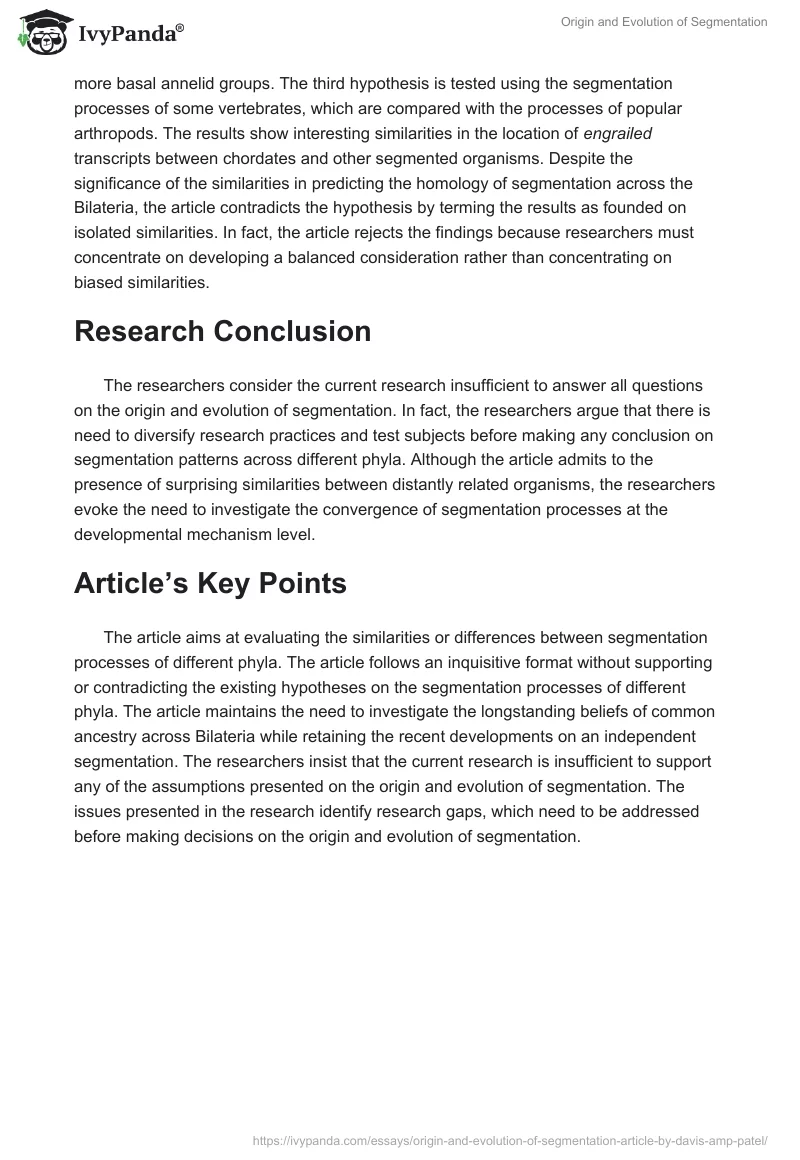Research Hypotheses
In the article, “Origin and Evolution of Segmentation”, the first hypothesis supports the independent segmentation in annelids, arthropods, and chordates. It expects minor similarities in the developmental processes within the groups. The second hypothesis supports segmentation similarities within the protostomes but considers chordates to have segmented independently. The hypothesis predicts variations in the segmentation processes of chordates and arthropods while expecting major similarities between annelids and arthropods. The hypothesis also predicts possibilities of discovering developmental or molecular vestiges of parent segments during the embryogenesis of some un-segmented phyla. In the last hypothesis, which supports homologous segmentation throughout the Bilateria, the authors predict collective similarities in the segmentation processes. Additionally, the hypothesis predicts possibilities of detecting evolution vestiges of organic ancestors.
Supporting Evidence
The researchers establish a logical pattern of assessment that identifies differences in the segmentation processes of organisms in a single clade. The first hypothesis predicts negligible similarities in the segmentation patterns of arthropods, chordates, and annelids. The prediction is tested using segmentation processes of insects and non-insect arthropods, which though related, vary at the pair-rule level. Although the tests between insects and non-insect arthropods show similarities in the expression of the engrailed, the variations at the pair-rule level necessitate further research to map pair-rule levels in non-insect segmentation. The second hypothesis is tested by assessing the segmentation processes of annelids, which differ in the segmentation patterns of some crustaceans despite following anterior-to-posterior progressions. Additionally, the expression of the engrailed gene shows inconsistencies between location of segmented cells and their functional role in the segmentation process. The test contradicts the second hypothesis of the similarity of segmentation processes of annelids and arthropods by citing insufficient evidence on segmentation processes of more basal annelid groups. The third hypothesis is tested using the segmentation processes of some vertebrates, which are compared with the processes of popular arthropods. The results show interesting similarities in the location of engrailed transcripts between chordates and other segmented organisms. Despite the significance of the similarities in predicting the homology of segmentation across the Bilateria, the article contradicts the hypothesis by terming the results as founded on isolated similarities. In fact, the article rejects the findings because researchers must concentrate on developing a balanced consideration rather than concentrating on biased similarities.
Research Conclusion
The researchers consider the current research insufficient to answer all questions on the origin and evolution of segmentation. In fact, the researchers argue that there is need to diversify research practices and test subjects before making any conclusion on segmentation patterns across different phyla. Although the article admits to the presence of surprising similarities between distantly related organisms, the researchers evoke the need to investigate the convergence of segmentation processes at the developmental mechanism level.
Article’s Key Points
The article aims at evaluating the similarities or differences between segmentation processes of different phyla. The article follows an inquisitive format without supporting or contradicting the existing hypotheses on the segmentation processes of different phyla. The article maintains the need to investigate the longstanding beliefs of common ancestry across Bilateria while retaining the recent developments on an independent segmentation. The researchers insist that the current research is insufficient to support any of the assumptions presented on the origin and evolution of segmentation. The issues presented in the research identify research gaps, which need to be addressed before making decisions on the origin and evolution of segmentation.


